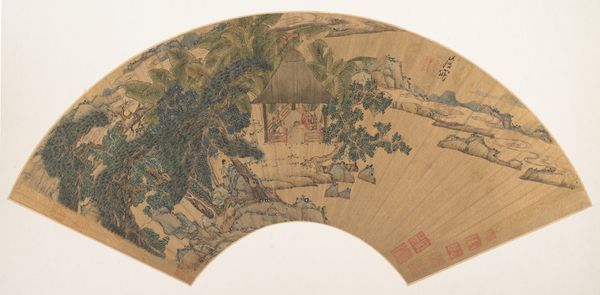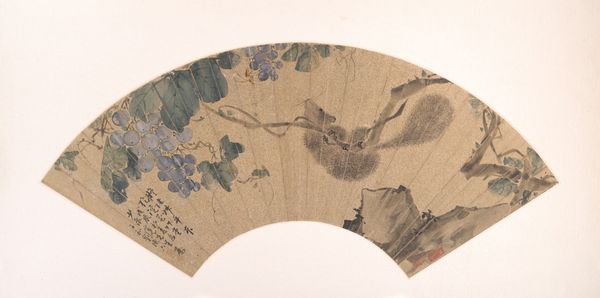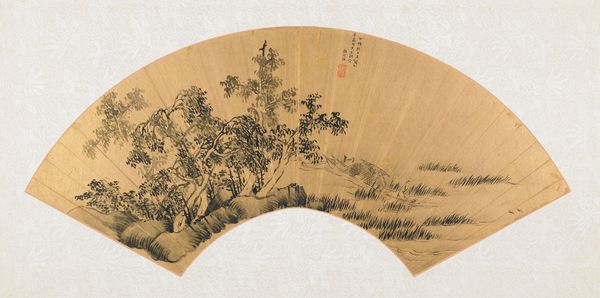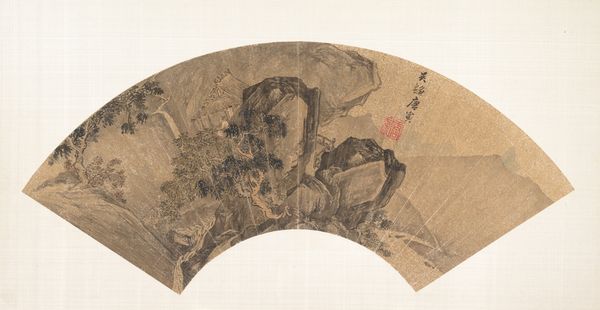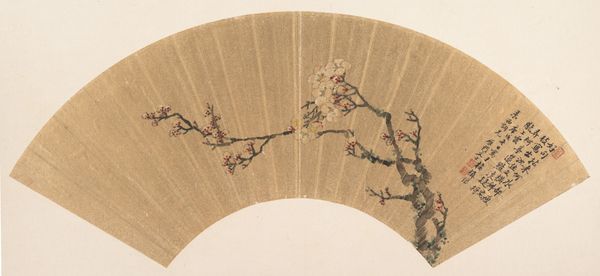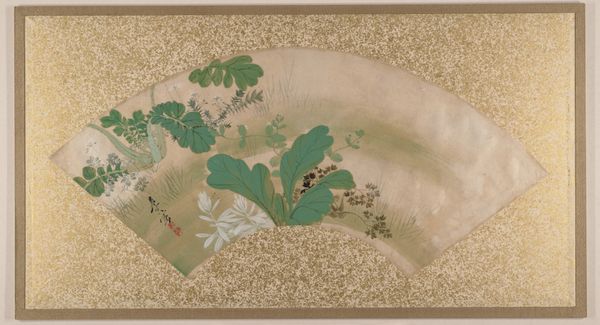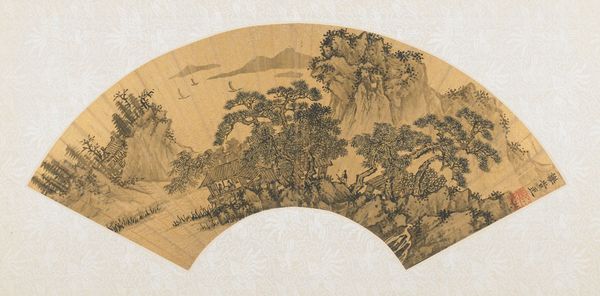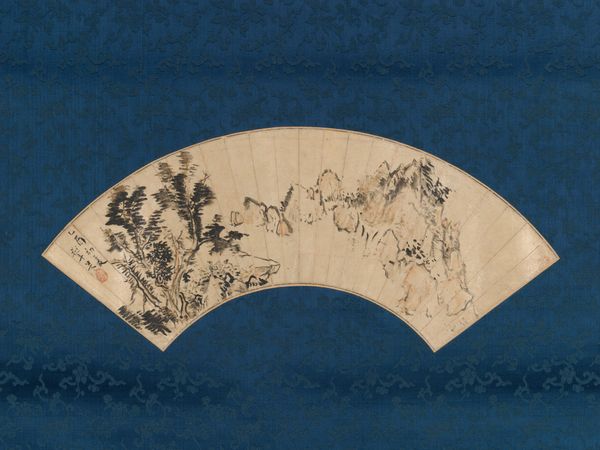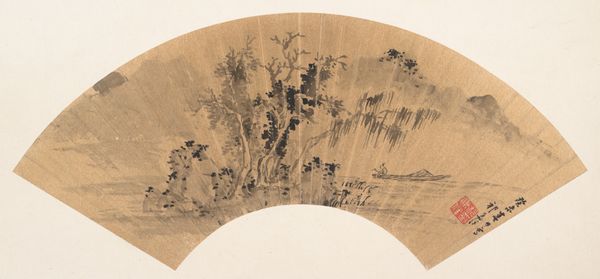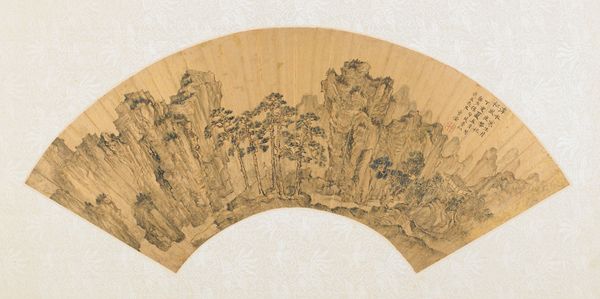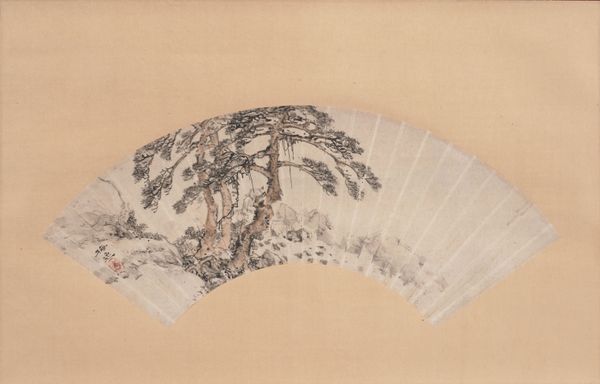
The Gathering at the Orchid Pavilion Ming dynasty (1368–1644), 15th –16th century
0:00
0:00
painting, paper, ink, mural
#
painting
#
asian-art
#
landscape
#
paper
#
ink
#
underpainting
#
orientalism
#
china
#
mural
#
calligraphy
Dimensions: Upper width: 19 1/2 in.; lower width: 9 in.; rib length: 6 1/2 in.
Copyright: Public Domain
Curator: Here we have “The Gathering at the Orchid Pavilion,” a painting attributed to Tang Yin from the Ming Dynasty, dating back to the 15th or 16th century. It employs ink on paper. Editor: Immediately, the scene's tranquility strikes me. There’s a distinct harmony between the calligraphic text and the misty landscape. The composition, with its subtle tonal gradations, evokes a real sense of peaceful contemplation. Curator: I'm drawn to the material conditions of its production. Paper would have been chosen carefully. Its absorbency dictates the flow of ink, influencing every stroke. And consider the social context: landscape paintings were often commissioned by the elite, reflections of power and refinement intended for select audiences and display. Editor: Indeed. The formal arrangement also echoes that. Observe the placement of the elements: the pavilion nestled within the rocks, the mountains framing the composition. And the texture that suggests both atmospheric depth and material presence is also achieved via masterful gradations of ink wash, is very powerful in such limited contrast. It has a symbolic resonance, no? A curated vision of harmonious living, and a return to simplicity. Curator: I'd argue this simplicity isn't innate, but rather crafted. Think of the labor behind sourcing the pigments for the ink, the apprenticeship involved in mastering brushstrokes. It is labor that informs aesthetic choices. Even its functionality, it is actually made for an everyday object – a handheld fan that has been transformed by an artistic rendition. Editor: I don't dispute the artistry involved in its creation; you point out valid points. Still, looking at it with its elegant design with dynamic, sweeping lines; subtle details – all carefully balanced within this arc – suggest an inner stillness, perhaps even enlightenment. A visual meditation on nature, culture, and artistry is undeniable, regardless of the materials. Curator: Seeing how the mundane materials are imbued with the aspirations of the artisan gives meaning to a work beyond formal achievements. We can even think about how these works were meant to circulate as commodities within specific networks. Editor: I concede to the important social aspects it holds as well, but these elements cannot be ignored within that understanding. This is a masterclass in evoking the spirit of harmony. Curator: A powerful fusion, then, of form, meaning, and tangible history. Editor: Yes, the piece resonates differently after delving into it deeper together.
Comments
No comments
Be the first to comment and join the conversation on the ultimate creative platform.
